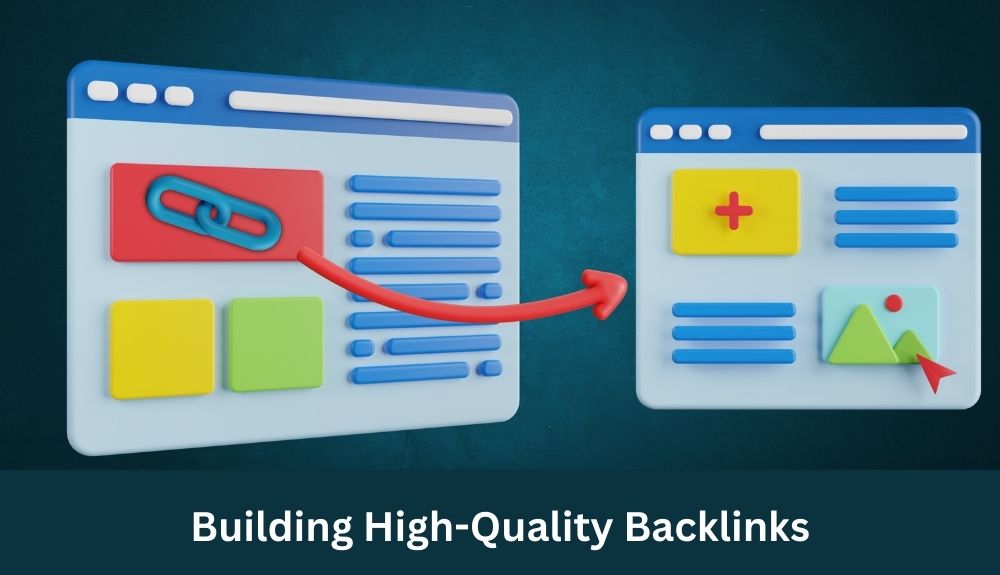Are you struggling to attract local customers to your business? In today’s digital age, optimizing your business for local search is essential for increasing your online visibility and driving targeted traffic to your website. But where do you start? How can you ensure that your business is showing up in local search results?
In this step-by-step guide, we will provide you with effective strategies and techniques to optimize your business for local search. From creating a Google My Business profile and optimizing your website for local keywords to building relationships with local directories and generating positive online reviews, we will cover all the essential steps you need to take to improve your local SEO.
By implementing these strategies, you can boost your online presence, increase brand awareness, and attract more local customers to your business. So, let’s dive in and take your business to the next level with local search optimization.
Introduction to Local SEO
Local SEO plays a crucial role in helping businesses target a specific geographic location and increase their online visibility. By optimizing their website for local search, businesses can attract more relevant customers and drive higher conversions.
With the rise of mobile search and the increasing use of voice assistants, local SEO has become essential for businesses of all sizes. When users search for products or services in their area, search engines strive to deliver the most relevant and accurate results. By leveraging local SEO strategies, businesses can improve their chances of appearing in these local search results.
The importance of local SEO lies in its ability to connect businesses with their local audience. Whether you’re a brick-and-mortar store or a service-based business, targeting customers in your immediate vicinity can lead to higher foot traffic, increased brand awareness, and ultimately, more sales.
To effectively optimize your business for local search, it’s essential to understand the key factors that influence search engine rankings in local results. This includes factors such as proximity, relevance, and prominence. By strategically implementing local SEO techniques, businesses can position themselves as top choices for customers in their target area.
In the following sections, we will delve deeper into various aspects of local SEO, providing you with step-by-step guidance on how to optimize your website and online presence for better local search visibility. Let’s get started and explore the world of local SEO together.
Understanding Local SEO
Local SEO is a crucial aspect of modern digital marketing strategies for businesses targeting a specific geographic location. It focuses on optimizing your online presence to attract local customers and boost your visibility in local search results.
Unlike traditional SEO, which aims to improve organic rankings on a broader scale, local SEO is tailored to target customers in a specific area. It takes into account factors such as proximity, relevance, and prominence to determine the most relevant results for local searches.
The Concept of Local SEO
Local SEO involves optimizing various elements of your online presence to ensure that your business appears in the top results when users search for a product or service in a particular location. This includes optimizing your website, managing your Google My Business listing, and ensuring consistency in your NAP (name, address, phone number) information across directories.
The Difference from Traditional SEO
While traditional SEO focuses on broader keyword targeting and increasing organic rankings, local SEO emphasizes targeting localized keywords and optimizing for local intent. It is about connecting with users in your area and driving foot traffic to your physical location.
Local SEO also places significant emphasis on the optimization of your Google My Business listing. This includes providing accurate business information, managing and responding to reviews, and leveraging Google’s features such as posts and Q&A. A well-optimized Google My Business profile can greatly improve your chances of appearing in the local pack and attracting local customers.
In addition to on-page optimization, local SEO also involves generating high-quality backlinks from local sources and engaging with the local community through events, sponsorships, or partnerships. These off-page activities can boost your local authority and further improve your visibility in local search results.
Overall, local SEO is an essential strategy for businesses looking to attract customers within a specific area. By understanding the concept of local SEO and the key differences from traditional SEO, you can effectively optimize your online presence and position your business for success in the local market.
Remember, local SEO isn’t a one-time effort. It requires consistent monitoring, optimization, and adaptation to changes in Google’s algorithms and local search trends. Stay up-to-date with best practices and continue refining your local SEO strategy to maximize your online visibility and attract more local customers.
Optimizing Google My Business
Your Google My Business (GMB) listing plays a crucial role in improving your local search visibility and attracting potential customers in your area. To optimize your GMB listing and ensure maximum exposure, consider implementing the following tips:
1. Verify and Update Your Business Information: Start by claiming and verifying your GMB listing. Ensure that all the details about your business, including the name, address, phone number (NAP), website URL, and business hours, are accurate and up-to-date. Providing reliable and consistent information will help Google and your customers find your business easily.
2. Choose Relevant Categories: Selecting the most relevant categories for your business will help Google understand the nature of your products or services. Be specific and choose categories that accurately represent your offerings. Avoid overstuffing or selecting irrelevant categories, as it can confuse both search engines and potential customers.
3. Write a Compelling Business Description: Craft a compelling and informative business description that highlights your unique selling points and showcases your expertise. Use relevant keywords naturally and concisely describe what makes your business stand out from the competition. Remember to keep it user-friendly and captivating.
4. Add High-Quality Photos: Visual content can significantly impact your GMB listing’s appeal. Upload high-quality photos that showcase your products, services, interior, exterior, and team. Customers are more likely to engage with businesses that provide an enticing visual representation.
5. Encourage Customer Reviews: Positive reviews can boost your online reputation and attract more customers. Encourage satisfied customers to leave reviews on your GMB listing. Respond promptly and professionally to both positive and negative reviews, showing that you value customer feedback.
6. Publish Posts and Updates: Utilize the “Posts” feature on your GMB listing to share updates, promotions, events, and other relevant information. These posts can catch the attention of potential customers and keep your listing fresh and engaging.
7. Monitor Insights and Analytics: Regularly check your GMB Insights to gain valuable data about how customers are discovering and interacting with your business. Use this information to refine your local SEO strategies and meet your customers’ needs more effectively.
Remember, optimizing your GMB listing is just one step in your comprehensive local SEO strategy. By leveraging the power of Google My Business and following these tips, you can significantly increase your online visibility, attract more local customers, and ultimately grow your business.
Social Media Engagement for Local SEO
Social media plays a crucial role in enhancing local search engine optimization (SEO) efforts and effectively engaging with your local audience. By utilizing social media platforms strategically, businesses can boost their online visibility, attract more potential customers, and improve their local search rankings. Here’s how you can leverage social media for local SEO success:
1. Create Localized Social Media Profiles
Start by creating localized profiles on popular social media platforms such as Facebook, Twitter, and Instagram. Ensure that your profiles feature accurate and consistent business information, including the name, address, and phone number (NAP) details. This consistency across platforms helps search engines understand your business’s location and boosts its credibility.
2. Curate Relevant and Engaging Content
Develop a content strategy that focuses on generating valuable and localized content for your target audience. Share informative blog posts, articles, infographics, and videos that showcase your expertise and address the needs of your local community. Incorporate relevant keywords and terms related to your business and location, but avoid keyword stuffing.
3. Utilize Local Hashtags and Geotags
When posting on social media, make use of local hashtags and geotags to increase the visibility of your content to local users. These tags help categorize your posts and make them discoverable to people searching for content specific to your area. Additionally, engaging with other local businesses, influencers, and community organizations through these tags can strengthen your local presence.
4. Encourage User-Generated Content and Reviews
Leverage the power of user-generated content (UGC) and encourage your customers to share their experiences with your business on social media. Positive reviews and testimonials not only help improve your online reputation but also contribute to higher local search rankings. Engage with your audience by responding to comments, addressing concerns, and showing appreciation for their support.
5. Engage in Local Conversations and Events
Actively participate in local conversations on social media by responding to comments, sharing relevant updates, and engaging with your audience’s questions and feedback. By showcasing your involvement in the local community, you can establish your brand as trustworthy and authoritative. Also, consider sponsoring or participating in local events or collaborating with other businesses to expand your network and attract more local customers.
Remember, consistency, relevance, and genuine engagement are key when utilizing social media for local SEO. By implementing these strategies effectively, you can strengthen your online presence, improve local search visibility, and ultimately, attract more targeted customers in your local area.
Consistent NAP (Name, Address, Phone Number) Information
Maintaining consistent NAP (Name, Address, Phone Number) information across all online directories and platforms is crucial for successful local SEO. Consistent NAP information helps search engines and potential customers to accurately identify and locate your business.
Why Consistency is Key
1. Credibility and Trust: Consistent NAP information builds credibility and trust among search engines and users. It demonstrates that your business is legitimate and reliable.
2. Accurate Local Search Results: Search engines rely on NAP data to provide accurate local search results. Inconsistent or outdated information can lead to confusing and incorrect search results, negatively impacting your online visibility.
3. Avoiding Confusion: Inconsistent NAP information can confuse potential customers. They may find conflicting details such as different addresses or phone numbers across different platforms, leading them to question the legitimacy of your business.
4. Enhanced User Experience: Consistent NAP information creates a seamless user experience. When customers find accurate and consistent contact details, they can easily get in touch with your business, improving their overall experience.
Best Practices for Consistent NAP
To ensure consistent NAP information, consider the following best practices:
1. Use the Same Format: Keep the format of your business name, address, and phone number consistent across all platforms. Use the same abbreviations, punctuations, and spelling to avoid any discrepancies.
2. Update Changes Promptly: If you make any changes to your business name, address, or phone number, update it promptly on all online directories and platforms. This ensures that your information is always up-to-date and accurate.
3. Regularly Monitor Listings: Regularly monitor your business listings on various online directories and platforms. Check for any inconsistencies or outdated information and make necessary corrections.
4. Claim and Verify Listings: Claim and verify your business listings on popular directories like Google My Business, Yelp, and Bing Places for Business. This gives you control over your NAP information and enables you to make accurate updates.
By maintaining consistent NAP information across all directories and platforms, you can improve your local SEO efforts and enhance the visibility of your business to potential customers. Remember, accuracy and consistency are key factors in establishing trust, credibility, and a positive online reputation for your business.
Optimizing Online Directories and Citations

When it comes to local search engine optimization (SEO), optimizing your online directories and citations is crucial. Online directories play a significant role in determining your business’s local search rankings and visibility. Here are some essential tips for optimizing online directories and citations to improve your local search rankings:
1. Claim and Verify Your Business Listings
Start by claiming and verifying your business listings on popular online directories such as Google My Business, Yelp, Bing Places, and Yahoo Local. This step ensures that you have control over your business information and can make updates whenever necessary.
2. Consistent NAP Information
Consistency is key when it comes to your business’s name, address, and phone number (NAP) information. Ensure that your NAP details are accurate and consistent across all online directories and platforms. Inconsistencies can confuse search engines and potential customers, negatively impacting your local search rankings.
3. Complete and Optimize Your Profiles
Take the time to fill out every section of your business profiles on online directories. Provide comprehensive and up-to-date information about your business, including opening hours, website URL, and a brief description of your products or services. Optimize your profiles by incorporating relevant keywords naturally within the content.
4. Choose Relevant Categories and Subcategories
Select the most relevant categories and subcategories for your business listing. This helps search engines understand the nature of your business and improves the accuracy of local search results. Be specific and choose categories that accurately represent your offerings.
5. Accurate and Engaging Descriptions
Craft accurate and engaging descriptions for your business profiles. Highlight your unique selling points, services, and any other information that can attract potential customers. Use persuasive language and incorporate relevant keywords to optimize your descriptions for local search.
6. Consistent NAP Across Your Website
Ensure that your NAP information is consistent across your website. Include your business name, address, and phone number on every page, usually in the footer or contact section. This reinforces the accuracy and consistency of your business information, signaling to search engines that you are a reliable local business.
7. Monitor and Manage Reviews
Reviews on online directories and review platforms are essential for building trust and credibility with potential customers. Encourage satisfied customers to leave positive reviews and promptly address any negative feedback. Monitor your online reviews regularly and respond professionally to engage with your audience and showcase your commitment to customer satisfaction.
By following these tips, you can optimize your online directories and citations, which in turn improves your local search rankings. Remember to regularly update your business information and monitor your online presence to stay ahead of the competition and attract more local customers.
Performing a Local SEO Audit
Conducting a local SEO audit is essential to ensure that your website is fully optimized for local search. By analyzing and assessing your current online presence, you can identify areas for improvement and take actionable steps to enhance your local search visibility. Here is a step-by-step process for performing a local SEO audit:
1. Review your Google My Business listing:
Ensure that your Google My Business (GMB) profile is complete and up to date. Verify that all your business information, such as name, address, phone number (NAP), and website URL, is accurate. Add relevant categories and upload high-quality images that showcase your products or services.
2. Check online directories and citations:
Audit your presence in online directories and citations to ensure consistency and accuracy of your NAP information. Update any outdated or incorrect listings, and remove duplicate entries. Make sure your business is listed in relevant directories, particularly those that are specific to your industry or location.
3. Evaluate your website structure and content:
Analyze your website’s URL structure, title tags, headers, meta descriptions, and content. Ensure that your pages are well-optimized for local SEO by incorporating location-specific keywords in a natural and relevant manner. Optimize your headings to provide clear information about your business and services.
4. Review your backlink profile:
Evaluate the quality and relevance of your backlinks. Ensure that you have acquired high-quality backlinks from authoritative sources within your industry or local community. Remove any low-quality or spammy backlinks that could negatively impact your search rankings.
5. Analyze your local content:
Review the content on your website and assess its relevance and value to your local audience. Create location-specific pages that address the needs and interests of your local customers. Incorporate local keywords and provide informative content that demonstrates your expertise and engages your target audience.
6. Assess your mobile-friendliness:
Check if your website is mobile-friendly using Google’s mobile-friendly test tool. Optimize your site for mobile devices by ensuring fast loading speed, responsive design, and easy navigation.
7. Monitor your online reputation:
Track and respond to online reviews, both positive and negative. Engage with your customers and address any concerns or issues promptly. This helps build customer trust and improves your online reputation.
By following these steps and continuously monitoring and optimizing your local SEO efforts, you can ensure that your website is fully optimized for local search and attract more targeted customers in your local area.
Optimizing Website Structure and Content
Website structure and content play a crucial role in optimizing your website for local SEO. By focusing on key elements such as URL structure, title tags, headers, meta descriptions, and content, you can improve your visibility in local search results and attract more targeted customers in your area.
URL Structure
When optimizing your website for local SEO, it’s important to have a clear and structured URL hierarchy. This helps search engines understand the organization of your website and makes it easier for users to navigate. Consider including your location or relevant keywords in your URL structure to signal to search engines that your website is relevant to local searches.
Title Tags
Title tags are HTML elements that define the title of a web page. They are displayed as the clickable headline in search engine results. To optimize your website for local SEO, include your target keywords and location in your title tags. This helps search engines understand the local relevance of your content and improves your chances of appearing in local search results.
Headers
Headers (H1, H2, H3, etc.) are important for organizing your content and signaling its structure to search engines. Include relevant keywords and location-specific information in your headers to improve your local SEO. Use H1 tags for main headings, H2 tags for subheadings, and so on, to create a clear hierarchy of information.
Meta Descriptions
Meta descriptions are brief snippets that summarize the content of a web page. They are displayed below the title tag in search engine results. Including relevant keywords and location-specific information in your meta descriptions can attract more clicks from local searchers and improve your local SEO visibility.
Content
High-quality and relevant content is an essential component of local SEO. Create valuable content that addresses the needs and interests of your local audience. Incorporate local keywords naturally throughout your content to optimize it for local search. Consider creating location-specific pages to target local keywords and provide relevant information to your local customers.
Remember, optimizing your website structure and content for local SEO requires a comprehensive approach. Pay attention to URL structure, title tags, headers, meta descriptions, and content to ensure that your website is well-optimized for local search. By following these key principles, you can increase your online visibility, attract more local customers, and drive the success of your business.
Creating Location-Specific Pages
To effectively target local keywords and attract local customers, creating location-specific pages on your website is crucial. These pages are specifically tailored to cater to the needs and preferences of users in specific geographic locations. Here are some tips to help you create effective location-specific pages for your website:
Conduct Local Keyword Research
Start by conducting thorough keyword research to identify the most relevant and high-performing local keywords for each target location. Utilize keyword research tools and consider the search habits and preferences of your local audience. Incorporate these keywords naturally into your page titles, headings, and content to optimize for local search intent.
Provide Localized Information
Ensure that your location-specific pages provide valuable localized information to your target audience. Include details about the specific services or products available at each location, as well as any unique offerings or promotions. This will not only improve the user experience but also boost your visibility in local search results.
Optimize Page Metadata
Optimize the metadata of your location-specific pages, including the page title, meta description, and URL structure. Incorporate relevant local keywords naturally while keeping the information concise and compelling. This will make your pages more appealing to both search engines and potential customers.
Display Local Contact Information
Make sure to prominently display the contact information for each specific location on its corresponding page. This includes the name, address, and phone number (NAP) of that particular branch or store. Consistency is key here, so ensure that the information matches the details listed on your Google My Business and other online directories.
Highlight Customer Testimonials and Reviews
Include testimonials and reviews from local customers to build trust and establish credibility for your business in each location. Positive feedback can go a long way in attracting new customers and reinforcing your reputation as a reliable local provider.
Create Geographically Relevant Content
Develop unique and engaging content that is relevant to each location. This could include local news, events, or stories that resonate with your local audience. By doing so, you demonstrate your knowledge and connection to the local community, enhancing your brand’s appeal in the area.
Use Location-specific URLs
Consider using location-specific URLs for your pages to further emphasize the local focus. For example, you could utilize subdomains or subdirectories with the city or region name in the URL structure. This can contribute to better visibility in local search results.
By following these tips, you can create effective location-specific pages on your website that target local keywords and attract local customers. Remember to regularly update and optimize these pages to stay relevant and maintain your online visibility in the dynamic world of local SEO.
Generating Local Content
Creating valuable local content is crucial for improving your local SEO and effectively engaging with your target audience. By providing relevant and informative content that resonates with your local customers, you can increase your online visibility and attract more potential customers in your area. Here are some strategies to help you generate high-quality local content:
Keyword Research
Before creating local content, conduct keyword research to identify the specific keywords and phrases that are relevant to your target audience and local area. Use tools like Google Keyword Planner or SEMrush to discover local search terms with good search volume and low competition. Incorporate these keywords naturally throughout your content to increase your chances of ranking higher in local search results.
Address Local Topics and Issues
To establish yourself as an authority in your local area, address local topics and issues that are important to your target audience. This could include highlighting local events, sharing local success stories, or discussing challenges specific to your community. By demonstrating your understanding of local issues, you can build trust and credibility among your local customers.
Showcase Local Testimonials and Reviews
Include testimonials and reviews from satisfied local customers in your content. This helps to showcase the positive experiences of your customers and builds social proof for your business. Share success stories, case studies, or quotes that highlight the benefits and satisfaction your customers have gained from your products or services.
Create Location-Specific Landing Pages
Develop location-specific landing pages on your website to target local keywords and attract local customers. Each landing page should focus on one specific location and provide tailored information such as store hours, directions, local contact information, and specific offerings for that location. Optimize these pages with relevant keywords and ensure they provide a seamless user experience.
Collaborate with Local Influencers or Organizations
Partnering with local influencers or organizations can help expand your reach and enhance the credibility of your content. Seek opportunities to collaborate with local bloggers, social media influencers, or community organizations, such as sponsoring local events or participating in local charity initiatives. This not only generates valuable local content but also strengthens your relationship with the local community.
Provide Local Tips and Recommendations
Offer practical and valuable tips related to your industry or niche that are specific to your local area. This could include recommending local attractions, providing insider tips for navigating the city, or sharing local resources and services. By providing useful information, you promote engagement and position yourself as a trusted local resource.
Remember, when creating local content, always prioritize relevance, accuracy, and authenticity. Tailor your content to address the specific interests and needs of your local audience. Through informative, engaging, and locally-focused content, you can strengthen your local SEO efforts and attract more local customers to your business.
Mobile-Friendly Website Optimization
In today’s digital age, having a mobile-friendly website is crucial for businesses aiming to improve their local search visibility. With the increasing number of people using smartphones and tablets to browse the internet, search engines like Google prioritize mobile-friendly websites in their rankings. Here’s why optimizing your website for mobile devices is essential:
1. Enhanced User Experience:
– Mobile-friendly websites provide a seamless browsing experience for visitors on their devices, ensuring they can navigate easily and find the information they need.
– Responsive design adapts your website’s layout and content to fit different screen sizes, allowing users to view and interact with your site without any difficulties.
2. Improved Local Search Rankings:
– Search engines prioritize mobile-friendly websites in their local search results. Having a mobile-friendly site increases your chances of appearing higher in local search rankings, making it easier for local customers to find you.
– Mobile optimization is especially critical for “near me” searches, as search engines prioritize displaying mobile-friendly sites when users search for nearby businesses.
3. Increased Web Traffic and Conversions:
– With more people using mobile devices to browse the internet, having a mobile-friendly website attracts a larger audience and increases your chances of driving more traffic to your site.
– A positive user experience on mobile devices enhances engagement and increases the likelihood of visitors taking desired actions, such as making purchases or contacting your business.
To ensure your website is mobile-friendly, consider the following tips:
– Use responsive design to create a website that adapts seamlessly to different screen sizes.
– Optimize page load times to provide a fast and smooth user experience.
– Prioritize mobile-friendly content and ensure it is easily readable on small screens.
– Optimize forms and calls-to-action (CTAs) for mobile users, making it easy for them to complete actions on their devices.
– Test your website’s mobile-friendliness using tools like Google’s Mobile-Friendly Test and address any issues that may arise.
By investing in mobile-friendly website optimization, you can enhance your local search visibility, attract more mobile users, and ultimately drive more targeted traffic and conversions to your business.
Remember, a mobile-friendly website is now a crucial component of a successful online presence. Make sure you prioritize mobile optimization to stay competitive in the evolving digital landscape.
Building High-Quality Backlinks

When it comes to optimizing your website for local search, acquiring high-quality backlinks is a crucial factor that can significantly boost your local search rankings. Backlinks, also known as inbound links, are links from external websites that point to your website. These links act as a vote of confidence and credibility for search engines, indicating that your website is valuable and trustworthy.
Here are some tips to help you acquire high-quality backlinks to enhance your local SEO efforts:
1. Local Business Directories and Citations
– Submit your business information to reputable local business directories. These directories often provide a backlink to your website, which can improve your local search visibility.
– Ensure that your business information, such as name, address, phone number (NAP), is consistent across all directories and citations. Inconsistent information can confuse search engines and negatively impact your local SEO.
2. Guest Blogging
– Reach out to local websites or blogs within your industry and offer to write a guest post. In your guest post, include relevant and informative content that demonstrates your expertise.
– Within the guest post, include a backlink to your website. This not only drives traffic to your website but also signals to search engines that your website is a reliable source of information.
3. Local Partnerships and Sponsorships
– Identify local businesses or organizations that align with your industry and consider forming partnerships or sponsoring their events or projects.
– As part of your partnership or sponsorship, ask for a backlink from their website to yours. This can not only improve your local search rankings but also enhance your online visibility within the local community.
4. Online Reviews and Testimonials
– Encourage satisfied customers to leave positive reviews and testimonials about your business on reputable review websites or social media platforms.
– Reviews and testimonials often include a backlink to your website, which can boost your credibility and local search rankings.
Remember, the key to acquiring high-quality backlinks is relevance and authority. Focus on obtaining backlinks from websites that are relevant to your industry and have a good reputation. Quality always trumps quantity when it comes to backlinks.
By implementing these tips and acquiring high-quality backlinks, you can improve your website’s authority and climb higher in local search rankings, making it easier for potential customers in your area to find your business.
Engaging in the Local Community
Engaging with the local community can have numerous benefits for your business and can significantly boost your local SEO efforts. By actively participating in local events and building relationships within the community, you can enhance your online visibility, increase brand awareness, and attract more local customers. Here are some key benefits of engaging in the local community:
1. Establishes Trust and Authority
By actively participating in local events and engaging with the community, you can establish yourself as an authoritative figure in your industry. This helps build trust and credibility among local customers, as they see you as a reliable and active presence within their community.
2. Boosts Online Visibility
Engaging in the local community can also enhance your online visibility. When you actively participate in local events, local news outlets and community organizations are more likely to mention and link to your business. These mentions and backlinks can improve your search engine rankings, making it easier for local customers to find you online.
3. Increases Customer Loyalty
Building relationships with the local community can significantly increase customer loyalty. When you engage with the community and show genuine interest in their needs and concerns, customers are more likely to support and recommend your business. Positive word-of-mouth recommendations can greatly contribute to your local SEO efforts.
4. Provides Opportunities for Local Partnerships
Participating in local events and engaging with the community opens doors for potential partnerships with other local businesses. Collaboration with complementary businesses can lead to cross-promotion and shared marketing efforts, amplifying your reach and visibility within the local market.
5. Generates Local Content and Reviews
Engaging in the local community provides opportunities to generate valuable local content. This can include blog posts, social media updates, and videos highlighting your involvement in local events and initiatives. Additionally, participating in the community can also lead to positive reviews from satisfied customers, which can further strengthen your online reputation and local SEO.
Incorporating community engagement into your local SEO strategy can have a significant impact on your online visibility and overall success. By actively participating in local events and building relationships within the community, you can establish trust, increase brand awareness, and attract more local customers.
Local SEO Tools
Tracking and measuring the effectiveness of your local SEO efforts is crucial for optimizing your website’s visibility in local search results. Fortunately, there are several tools available that can simplify this process and provide valuable insights into your local SEO performance. Here are some of the top tools to consider:
1. Google My Business Insights: This free tool provides essential data about how customers find and interact with your Google My Business listing. It offers valuable metrics such as the number of clicks, phone calls, and direction requests.
2. Moz Local: Moz Local helps you manage and monitor your business listings across various online directories. It ensures your NAP (Name, Address, Phone Number) information is accurate and consistent, which improves your local search rankings.
3. SEMrush: This all-in-one SEO tool offers a range of features for local SEO analysis. It provides keyword research, competitor analysis, and tracking of local search rankings.
4. BrightLocal: BrightLocal’s Local Search Rank Checker allows you to track your search rankings for specific keywords in multiple locations. It provides comprehensive reports and insights to help you understand your local search performance.
5. Whitespark: Whitespark’s Local Citation Finder helps you discover relevant citation opportunities to boost your local search rankings. It also offers a Local Rank Tracker to monitor your rankings for target keywords.
6. Google Analytics: While not specifically designed for local SEO, Google Analytics provides valuable data on website traffic, including visits from local search queries. It helps you understand the performance of your local SEO efforts in driving targeted traffic to your site.
These tools can significantly enhance your ability to track and measure your local SEO efforts. By utilizing them effectively, you can make data-driven decisions to optimize your website for better visibility in local search results.
Conclusion
In this comprehensive guide, we have explored the key strategies and techniques for optimizing your website for local search. By implementing these steps, you can greatly enhance your online visibility and attract more targeted customers in your local area.
Throughout the guide, we have discussed the importance of local SEO and its role in driving organic traffic to your business. We have emphasized the significance of optimizing your Google My Business listing, engaging with your local audience through social media, and maintaining consistent NAP (Name, Address, Phone Number) information across all online directories and platforms.
We have also delved into the essential aspects of website structure and content optimization, including URL structure, title tags, headers, meta descriptions, and content creation. By creating location-specific pages and generating valuable local content, you can effectively target local keywords and gain the attention of your local customers.
Furthermore, we have highlighted the importance of having a mobile-friendly website, building high-quality backlinks, and engaging with the local community. The benefits of participating in local events and building relationships with your local audience are not to be underestimated in the realm of local SEO.
To track and measure your local SEO efforts, we introduced several useful tools that can help you analyze the performance of your website and make data-driven decisions.
In conclusion, optimizing your website for local search is a crucial element of any successful online marketing strategy. By following the step-by-step guide provided herein, you can position your business as the most relevant and trustworthy result for local searches, increasing your brand awareness, customer base, and ultimately, the success of your business.











